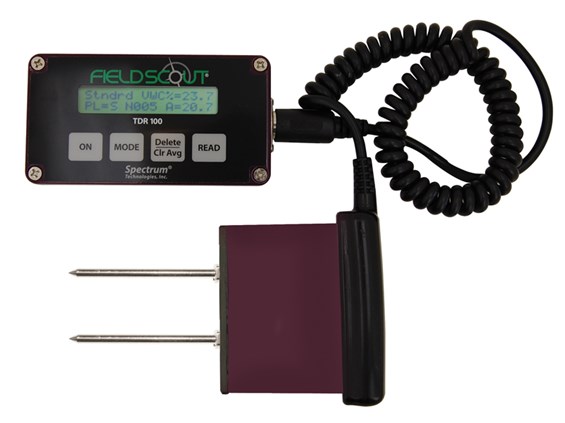time domain reflectometry (TDR)
After capacitance, TDR is perhaps the most widely used soil water content measurement technique. TDR consists of parallel rods, acting as transmission lines, where a voltage is launched along the rods and reflected back to the sensor for analysis. The speed or velocity of the voltage pulse along the rod is related to the dielectric permittivity of the substrate. In relatively wet soil the velocity of the pulse is slower than in drier soil.
Similar to capacitance and frequency domain sensors, TDR sensors must have good contact with the substrate of interest. Any air gaps will lead to erroneous measurements. The measurement volume of TDR sensors depends on the length of the rods with rods ranging in length from 8cm to 100cm. Caution needs to be exercised with longer rods as the probability of air gaps forming during installation increases with longer rods. Additionally, longer rods will measure a greater length of the soil profile and moisture content can vary significantly from shallow to deeper depths making interpretation of data difficult.
TDR sensors should not be used in high saline soils or soils with high bulk electrical conductivity or high attenuation. In soils with high EC values, the voltage pulse is not reflected back along the rod and, therefore, is not measured. The pulse is attenuated beyond the length of the rod. TDR probes have been found to have errors in soils with EC values of 1.32 dS/m (McIsaac 2010).
related techniques
- Capacitance or frequency domain
- Time domain transmissometry (TDT)
- Cosmic-Ray (COSMOS)
- Ground penetrating radar (GPR)

